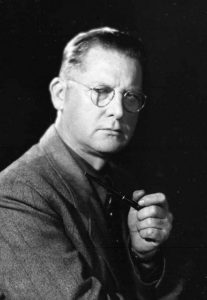
Erle Stanley Gardner was a pulp writer nearly all of his life, not just in the early years. But for all his prolific pulp writing, he’s still indelibly identified in the public eye as being the creator and author of Perry Mason. And Perry Mason never appeared in the pulp magazines, although some of them did appear in one of the slicks, the Saturday Evening Post. The first Perry Mason book appeared in 1933, and the final one, the 82nd one, was published posthumously in 1973; Gardner died in 1970. It was an amazing 40-year span that made Gardner the best-selling American author at the time.
The ninth of the Perry Mason murder mysteries was The Case of the Stuttering Bishop. It was published in September 1936. The story begins when Perry is visited by Bishop William Mallory of Sydney, Australia. The Bishop wants to consult Perry on a manslaughter case that’s 22 years old. But Perry suspects there’s more to it than that. The Bishop is keeping a secret; a secret about an orphaned girl who is heiress to a fortune.
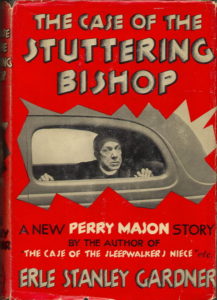
Perry’s certain that a counterfeit heiress is currently living with old Renwold C. Brownley, posing as his granddaughter. The real heiress can’t be found, but her mother, Julia Branner, the woman who gave her up as an infant, wants her long-lost daughter to be found and recognized as the true heir. But before any of this can happen, old Renwold C. Brownley is killed, and Julia Branner is accused of the crime. To make matters worse, there’s a witness who saw her fire five shots into old Renwold Brownley. It makes for a tough case that only Perry Mason can solve.
Appearing in the story are Perry Mason, Della Street, Paul Drake, and Hamilton Burger. And there’s a nameless switchboard operator who would eventually evolve into Gertie. The courtroom shenanigans are kept to a minimum, but the convoluted mystery is still most satisfying.
This story was adapted for the motion pictures in 1937. The story was the final one in Warner Brothers’ Perry Mason series, just a year after its publication in book form. The role of Perry Mason was played by Donald Woods and Della Street was portrayed by Ann Dvorak. It was the only time that these two actors played the lead roles.
When Perry Mason came to television, with Raymond Burr in the role, this story was adapted for a second season episode. It was aired on March 14, 1959.
The Case of the Dangerous Dowager
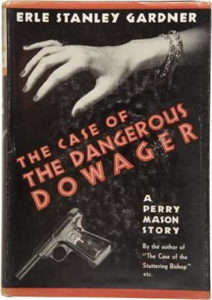
Less than a year after the initial publication of The Case of the Stuttering Bishop, the 10th Perry Mason mystery hit the bookstands. The Case of the Dangerous Dowager was published in April 1937. She’s rich and in her 60s; she drinks, swears, and smokes cigars. This is Mathilda Benson, the dangerous dowager who enlists the aid of Perry Mason to purchase back some gambling IOUs signed by her niece Sylvia Oxman. Sylvia’s estranged husband Frank Oxman wants to get the IOUs as evidence in his upcoming divorce trial. Perry’s to prevent that.
But, as you may guess, murder is in the offing. Perry boards the gambling ship The Horn of Plenty to buy back the IOUs from owner Sam Grieb. But he finds Grieb dead in his office, shot through the head. Was it young Sylvia, who was found in the outer office? Or estranged husband Frank, also aboard the gambling ship? Maybe old auntie Mathilda Benson? Or someone else? Perry not only finds himself in the middle of the mystery, but also is forced into hiding as an accessory.
There’s no courtroom drama in this story. District Attorney Hamilton Berger never makes an appearance, and the story never moves into court. But the rest of the usual characters are present: Perry, Della Street, and Paul Drake. It makes for a compelling mystery that you can’t put down!
And, as was true for just about every Perry Mason story ever written, this one was adapted for the 1957-66 television series which made Raymond Burr a household name. It was broadcast on May 9, 1959, as part of the series’ second season on the air.
I doubt if the character of Perry Mason will ever fade from the public mind. It’s a strong character from a strong mystery series. There’s always some unseen twist to keep the reader, or viewer, guessing. Both of these books are highly recommended!

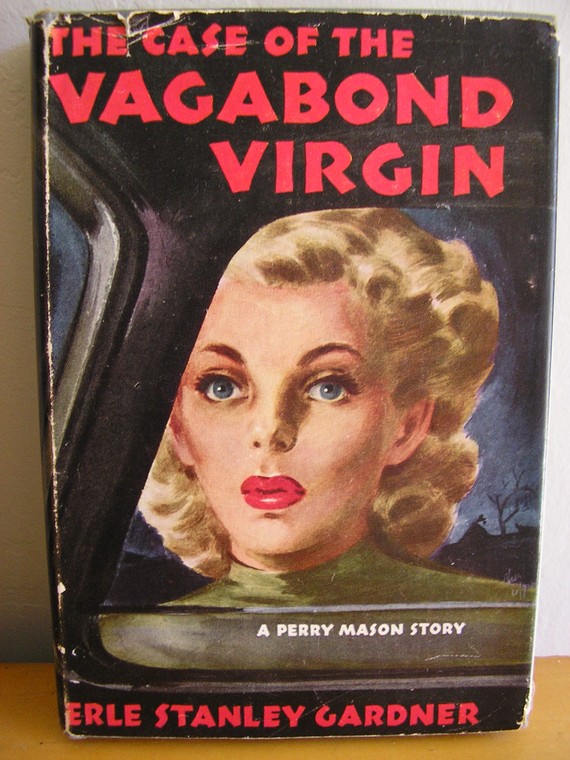
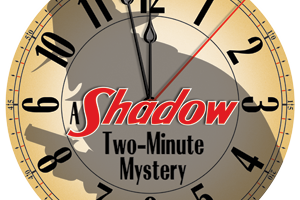
Your comments